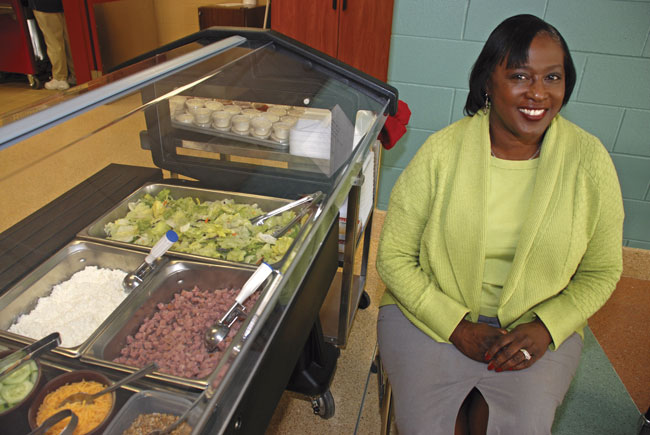BY ELISABETH ANDREWS
When First Lady Michelle Obama took up the cause of childhood obesity, parents cheered for her commitment to kids’ health and well-being. With some 17 percent of American children currently obese, the topic is clearly one of great importance. Obese children are far more likely to become obese adults, and even before they reach adulthood are prone to suffer from weight-related problems like type 2 diabetes, high blood pressure, and high cholesterol.
One critical component in preventing obesity is making sure children are eating a nutritious diet, which is why school nutrition policies have been adopted at both the federal and state levels. Actually changing children’s eating habits at school, however, turns out to be surprisingly difficult.
For one thing, if you assume that parents are concerned about their children’s school-day intake, you’re only half right. Hattie “Lou” Johnson, food services director for the Monroe County Community School Corporation (MCCSC), says she gets healthy-food requests only from parents whose children are in elementary school.
In fact, when Johnson has taken steps to limit items like pizza and French fries for the higher grade levels, she’s encountered resistance from parents.
“The elementary school parents seem to really care that their child is getting a nutritious meal, but by middle school they’ve backed off, and in high school they just want to know that their kid ate,” she says.
Such concerns are what prevent MCCSC from getting rid of these less healthy foods altogether. Indiana’s “Better Choices” school nutrition policy, which builds on the federal Child Nutrition Act, requires that 50 percent of food and beverages offered qualify as “better choice” items. These healthier foods do not exceed specified thresholds for fat, saturated fat, and sugar. Some of the remaining 50 percent of foods are limited in their portion sizes, but as you might expect, children still tend to choose from among these less nutritious offerings.
With backing from parents, Johnson has concentrated most of her improvement efforts on the elementary schools. She has pulled out all the fryers, so the French “fries” are now baked, along with chicken and fish fingers. All milk is 2 percent fat or less, pizza dough is whole grain, and Fairview and Clear Creek schools now have salad bars with an abundance of fresh produce.
For all schools and grade levels, Johnson has switched out refined breads for whole grain, added more fresh fruits and vegetables, and changed the structure of reimbursable meals so that potato chips no longer qualify as a side item for free- and reduced-price lunches.
She has also taken steps toward local sourcing, purchasing bagels and granola from the Scholars Inn Bakehouse and buying Indiana watermelons, tomatoes, cucumbers, blueberries, and apples when in season. She’d like to do more with local farmers, she says, but it’s a problem of both volume and preparation.
“Aside from the high volume, we also need all the produce prewashed,” she says. “I don’t think local farmers are equipped for that, but there’s no way I can do it here. I already have people coming at 6:30 or 7 am to prep the food—how much earlier could I possibly get them in the building?”
One area in which huge strides have been made concerns beverages in vending machines. Vending machines that are accessible during the school day now carry only juice, water, and some diet drinks—full-calorie sodas are no longer available. Moreover, all vending machines have been removed from elementary schools.
The only problem is that in an era of tremendous budget cuts, schools are heavily reliant on vending machine revenues.
“Vending machines are extremely important for extracurricular activities,” Johnson says. “They pay for things like transportation to athletic and band events.”
















